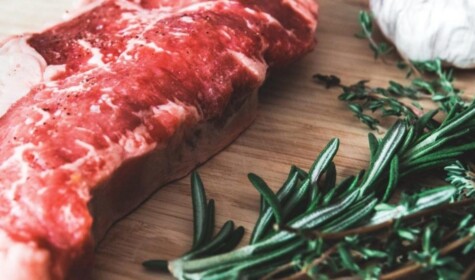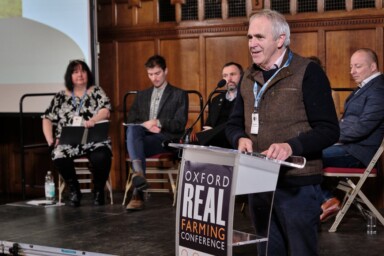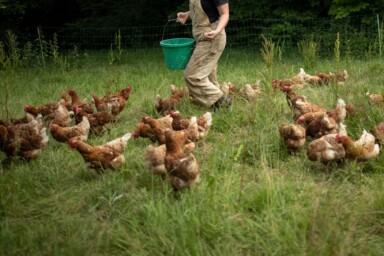For many people, deciding what to eat often involves figuring out which foods fit within their budget. But if you had an unlimited amount of money to spend on food each month, how would your diet change? When price is taken out of the equation, many people might choose foods that are more nutritious, satiating and raised in ways that regenerate the ecosystem instead of degrading it.
Unfortunately, processed foods are priced incredibly low, making them the only option for many. It can be easy to consume a high number of calories from cheap foods due to the ‘hyperpalatable’ (overly delicious) nature of ultra-processed foods. Many people would be shocked to learn how much added sugar and flavour enhancers are put in our food to get us addicted. There’s a reason you can’t eat ‘just one’!
For years, food companies have paid specialists to research the ‘bliss point’ – that combination of salt, sugar and fat that makes a particular food compulsively delicious. They are hoping that you will overeat their products and have little regard for whether the products that they are making will provide you with adequate nutrition.
Within this context, nutrient-dense foods like high quality, well-raised meat, dairy and eggs are often compared to nutritionally inferior and environmentally damaging foods. But when making such comparisons, it is vital that we take a step back and look beyond the price tag.
It goes without saying that some consumers face serious financial limitations when it comes to purchasing food, but for those of us that have the luxury of choice, is it time to stop labelling better meat as simply ‘too expensive’? Here are three things to consider when thinking about the true cost of the food we eat.
Nutrients over calories
One of the biggest failings of our current food system is how the price on the supermarket shelf often fails to reflect the true nutritional value that it affords. While a box of cookies may be cheaper than apples, almonds or steak, which item offers more value in terms of nutrients?
Let’s look at beef as an example.
As far as nutrient density in food, one small three ounce serving of beef has approximately 100 calories, 20 grams of high-quality, bioavailable protein and approximately 40% of the daily requirements of niacin, vitamins B6, B12 and zinc. Yet, many people assume that well raised is a luxury item that is simply too expensive to eat on a regular basis. In reality, there are many highly processed foods that are actually more expensive per ounce than grass-fed beef. This includes a six-pack of full-size Snickers candy bars, a four-pack of veggie burgers and even Beyond Meat’s fake beef crumbles.
In some countries, government policies and regulations provide subsidies and other programmes that provide support for many of the crops – like corn – that wind up becoming highly processed, low-nutrient foods. In an ideal food system, whole foods that provide a wide range of nutrients, like well raised meat, dairy and eggs, would be the priority instead, and cheap grains would not be subsidised.
Regeneration over degradation
Today, agriculture is more productive than it has ever been in the past. As policies have favoured production methods that focus on and reward maximum yields, farmers have worked to produce as much food as possible. Although this has largely been successful when it comes to producing a high quantity of food, it fails to take into account the true cost of prioritising yield over every other factor.
To achieve higher and higher yields, land and other natural resources must be pushed to extremes. Maximising production also often entails the use of synthetic chemicals and fertilisers to combat pests and help nutrient-depleted soil produce more crops.
Fortunately, an increasing number of people in the food system are starting to question whether yield should be our number one goal. More and more farms are beginning to adopt regenerative agriculture practices, which aim to produce food in harmony with nature. This is a major diversion from conventional farming practices, which often value yield by pound of nutrient poor commodity grain by extracting as much as possible from the ecosystem.
Farms that use regenerative practices often offer meat and produce at higher prices than typical items you may find at the supermarket. These prices aren’t farmers’ attempts to pad their pockets. Instead, they reflect the true cost of farming in harmony with nature. They are giving back and improving ecosystem function, ensuring we’ll have a healthy food system for the future. Farmers should be rewarded for the daily effort they invest in feeding us, especially if they are doing it in a way that improves the ecosystem and animal welfare alongside yield.
Healthy food for all
For those who have the means to pay a little extra for food produced through regenerative methods, it’s an important investment in the future of the planet. Higher-quality foods can have serious payouts down the road when it comes to staying healthy and should therefore be made accessible to everybody.
Personal health and the health of our planet is where the real wealth lies but to achieve it we must address inequality and poverty at all levels, given everybody the opportunity to buy good food.






